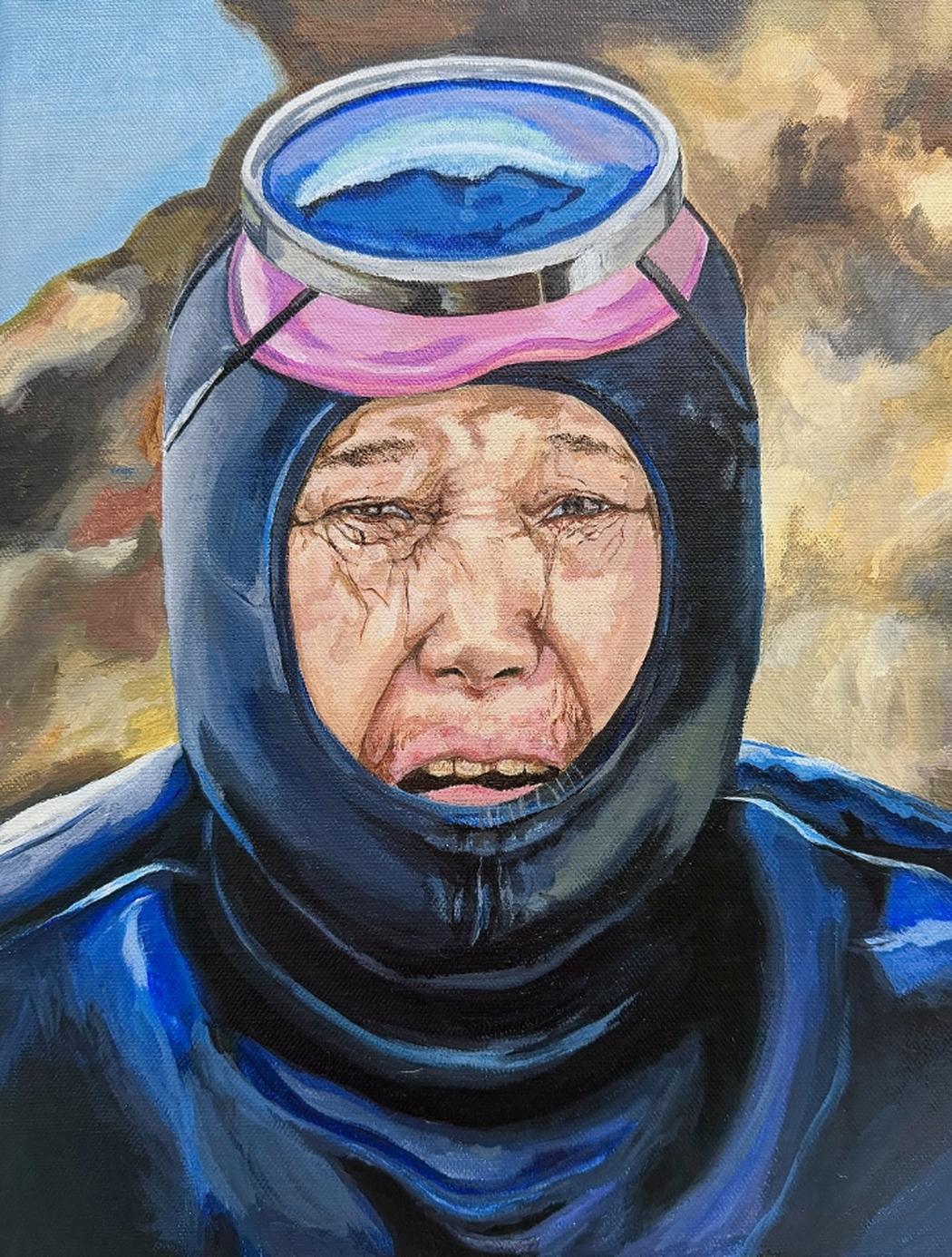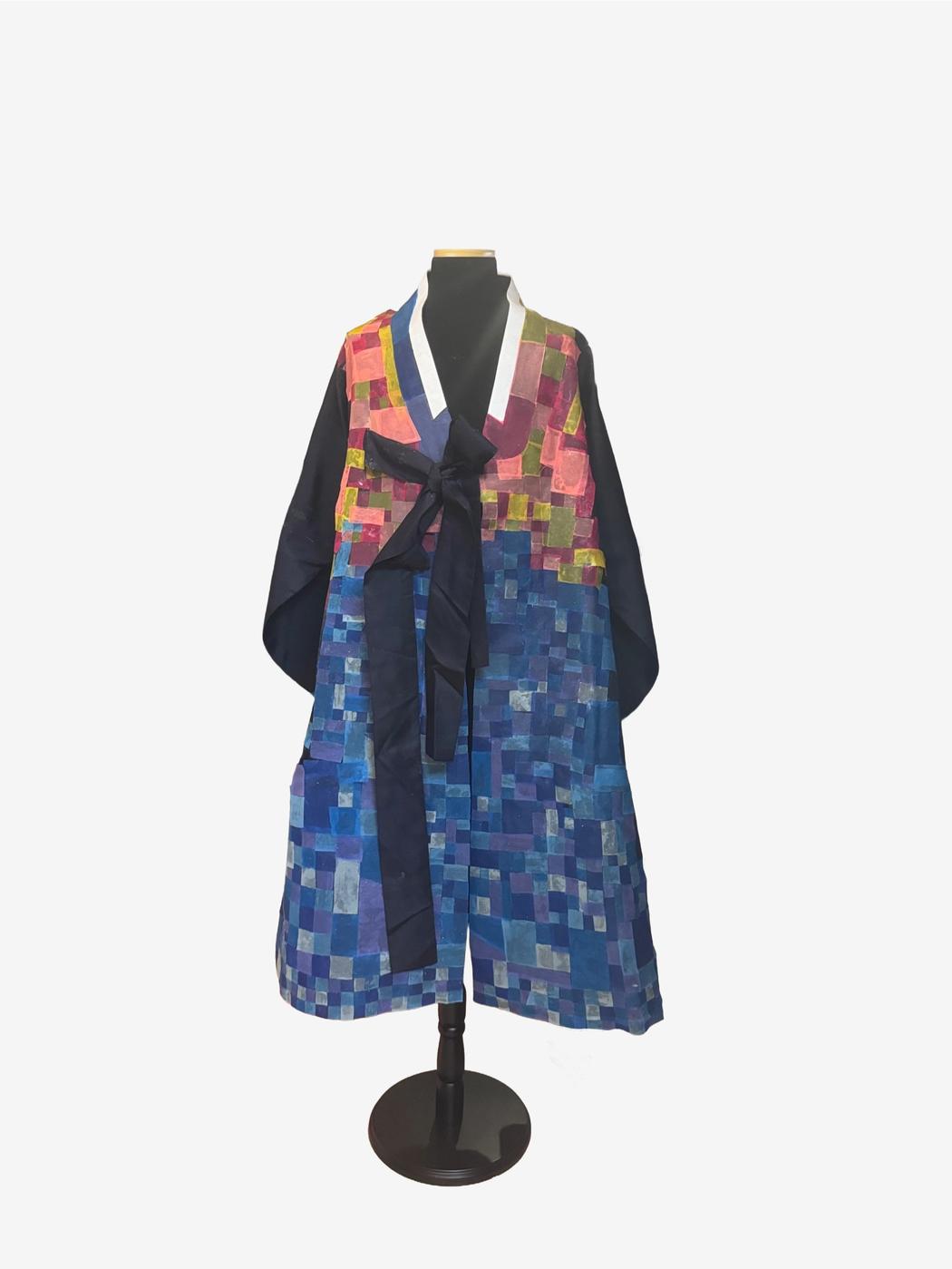Lucas Choi
Where do you live: Seoul, South Korea / Los Angeles, California
Your education: Yongsan International School of Seoul (Class of 2027)
Describe your art in three words: Cultural · Reimagined · Resilient
Your discipline: Visual Arts — Mixed Media (Painting, Fashion Design, and Experimental/Technological Art)
 Lucas Choi | Haenyo The Last Of Their Kind
Lucas Choi | Haenyo The Last Of Their Kind
You work across so many mediums — painting, illustration, fashion, and even augmented reality. How do you decide which form best suits an idea?
It depends on what the story needs to breathe. Some pieces, like “Haenyeo: The Last of Their Kind”, demanded the texture and patience of paint—a way to honor long-term endurance and cultural resilience through brush and pigment. Others, like the “Modern Bojagi Project”, needed the precision and tactile repetition of hand-stitching, since it’s literally about mending and unity. For another project, where I worked with ballistic materials, I had to merge art and science as symbols of protection and creativity. Each medium also becomes a language: painting conveys emotion, fabric holds memory, and technology turns ideas into living, interactive spaces.
Growing up between Korean and American cultures, how has that duality influenced your creative vision?
Art, to me, is a way of confronting fragility and piecing together beauty from what is broken. Whether it’s personal, spiritual, or collective, my work blends together realism, abstraction, and design to explore how people rebuild themselves after loss and rediscover meaning in color, faith, and form. As a Korean-American, I often felt suspended between two worlds: the discipline of tradition found in Korea and the freedom of modern expression found in the States. Ultimately, mixing these two areas and creating intersections between past and present, using modern materials to preserve tradition through painting and fabric became my bridge between those identities. When I layer brushstrokes or hand-stitch fabric, I’m not just creating an image; I’m connecting the generations of perseverance within my ancestors with the restless innovation of my own time. The Haenyeo diving beneath waves, the Hanbok woven from painted Bojagi squares—these figures and symbols are more than subjects; they are reflections of my cultural inheritance/preservation and theme of personal resilience. My art becomes a dialogue between the past and the present, where color and texture carry unique stories mere language cannot. Still, even within destruction, there is design; within darkness, a glimmer of renewal. Through art, I seek not perfection, but peace and a reconciliation between heritage and individuality, faith and fragility, struggle and rebirth.
 Lucas Choi | Modern Bojagi Project
Lucas Choi | Modern Bojagi Project
Your works often mix strength and vulnerability — can you describe how you balance these emotions in your compositions?
For me, strength and fragility are inseparable. In L’Ange Déchu (“The Fallen Angel”), I layered light and shadow to express how faith survives even through collapse. I think that tension between power and pain, between what protects and what breaks, is what makes a piece feel alive. My goal is to let both coexist, to show that vulnerability itself is a form of strength where resilience comes in.
What materials or techniques do you find yourself returning to again and again, and why?
Layering. Always layering. Whether I’m stitching fabric or blending acrylic on canvas, layering lets me tell stories of endurance. It mirrors how people rebuild after loss—layer by layer, moment by moment. I’m drawn to materials that carry meaning: silk, thread, and even digital fragments. Each has its own language of resilience. I return to them because they remind me that beauty often hides beneath what’s repaired.
How do you see the relationship between technology and art evolving in your own work?
Technology allows me to expand what “art” can be. Through my augmented reality projects, from digital lenses on K-pop culture to educational CPR health tutorials, I’ve learned that AR and AI can turn static ideas into living experiences. My goal is to merge emotional storytelling with innovation, using technology as a bridge between imagination and reality. In the future, I hope to build immersive exhibits where viewers can move through digital layers of my work—like walking inside a Bojagi quilt or exploring a virtual Haenyeo dive beneath the sea.
What message or feeling do you hope viewers take away from your art?
Through art, I hope they feel the quiet persistence of healing… that even in brokenness, there’s design and purpose. “Haenyeo: The Last of Their Kind” embodies that idea most clearly for me. These women dive into icy seas without modern gear, holding their breath for minutes at a time, relying only on endurance passed down through generations. Their struggle isn’t loud; rather, it’s silent, disciplined, and deeply human. I want viewers to feel that same strength: that survival can be graceful, that beauty can emerge even beneath pressure. Every piece I make is a reminder that resilience is its own form of art.
As a young artist, what challenges do you face when expressing complex emotions or social ideas through visual media?
One challenge is being taken seriously while still being vulnerable. People sometimes see age before depth, so I’ve learned to let the work speak first. Translating complex emotions into form can feel risky, especially when combining technical elements with human ones. But through art, I’ve found that honesty resonates more than perfection. I remind myself that creating isn’t about proving something; it’s about revealing something… even the parts that tremble…

Leave a Reply